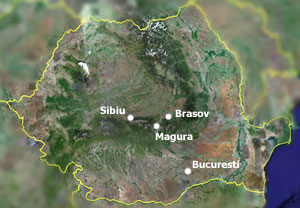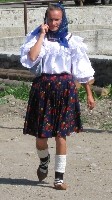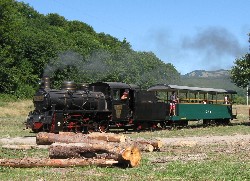



2018-08-22
Travel to Transylvania Romania Carpathians

Romania holidays in Transylvania and the Carpathian mountains
Romania is generally seen as a clean and unspoilt destination with beautiful countryside which has a long and comprehensive history, combined with various historic sites and attractions. These include historic castles, climbing stones and caves with bats, and various medieval age remains. There are also many historic fortified churches, houses, and landscapes, ruins and museums. Many tourists are drawn by the culture the Transylvanian Saxons. The cities of Brasov and Sibiu are increasingly being seen as a rural alternative to Bucharest, with visitors year round, but one main tourist attraction is Dracula's Castle in Bran. In addition to these factors, the Romanian responsible tourist agency, CNTOURS, has deployed a strategy of ecotourism, aimed at exploiting, amongst other trips, Romania's strengths in hiking, climbing and close to nature tourism. Another significant, and the increasingly popular reason for tourism to Romania is genealogy, with many visitors coming to Transylvania to explore their family and ancestral roots.Travel to Transylvania Romania Carpathians
Visit to Romania - travel and vacation in Transylvania
The Transylvanian area is very sparsely populated, with several mountain ranges dominating the Carpathian region, and includes the highest mountains in the Southern Carpathians. Before last century the level land was home to a much larger bear population, but due to a combination of different factors including the protection of the traditional Romanian way of life, the famous rural clearances, and mass migration to mountain areas during the late summer, the area is now the most sparsely populated in Eastern Europe. The average animal population including bears, wolves and foxes in the forests is higher than that of Wallachia, Maramures and Olt county.
Travel destination Transylvania and Romania
On January 2007 Romania became a full member of the European Union. However, although numerous of Romania’s
traditions date back to the times of the Roman empire as the former Roman province "Dacia", for many European
fellows this country is still a blank spot on the map.
So as a travel destination Romania is a secret worth discovering. Unfortunately Romania is often linked with prejudices concerning safety and the standard of living, but once you have enjoyed Romanian hospitality you will definitely come back for more.
So as a travel destination Romania is a secret worth discovering. Unfortunately Romania is often linked with prejudices concerning safety and the standard of living, but once you have enjoyed Romanian hospitality you will definitely come back for more.
Demographics:
Romania covers 237,500 sq km with less than 22 million inhabitants. Not all of the inhabitants are Romanian,
the country grants rights to 19 ethnic minorities, among them Gypsies, Hungarians, Germans, Greeks, Lipovani,
Turks and others. This ethnic diversity, their traditions and lifestyle which for centuries have left their
marks in the regions of the country, makes Romania one of the most fascinating destinations in Europe.
Geography:
Looking at a map, Romania is easily identified through the Carpathian mountains, which form the shape of a horse-shoe. This 900 km long mountain range coming from the north-east stretching to the south-west is not only a geographical borderline but was also – for many centuries – a political border: Transylvania belonged to the Austro-Hungarian empire, Wallachia and Moldavia made the Kingdom of Romania in 1866. Since 1920 Transylvania and Romania have been united.
Transylvania is renowned for its Saxon villages with their mighty fortified churches, hidden in villages in the sun-flooded hills where good wines grow. The mountains offer splendid hiking and skiing opportunities. The Transylvanian cities of Brasov and Cluj offer unique treasures of history, and Sibiu is cultural capital of Europe in 2007 with the motto: Young since 1191 – a cultural city and city of cultures!
Southward of the Carpathian mountains in the wide plains lies Bucharest, Romania’s capital city. In the south-east the river Danube forms a mighty natural delta before entering the Black Sea. This delta really is unique in Europe and a birds’ paradise! You cannot imagine the number and diversity of birds breeding here if you haven’t seen them with your own eyes.
In the north-west of Romania lies Maramures, where wood is the main resource and is of course the basis for many works of art such as churches or gates with artistic carvings. The people of Maramures are very proud of their national costumes which are still part of their daily life.
Bucovina in the north is famous for its painted monasteries. Some of them are listed as cultural world heritage sites by UNESCO.
Climate:
Romania enjoys a continental climate with warm summers and cold snowy winters. Rainfall is usually quite low except in the mountains. Although temperatures can drop under –25°C in winter, you do not feel the cold as it is very dry.
Passports and visas:
As general rule all nationalities require a full passport that must be valid for the duration of your stay. Citizens of the EU only need their ID-card.
-> proceed to Magura and its environment
>< back to Startpage





